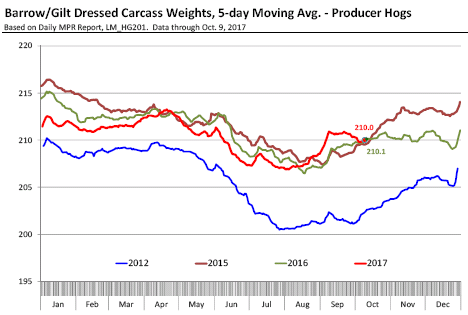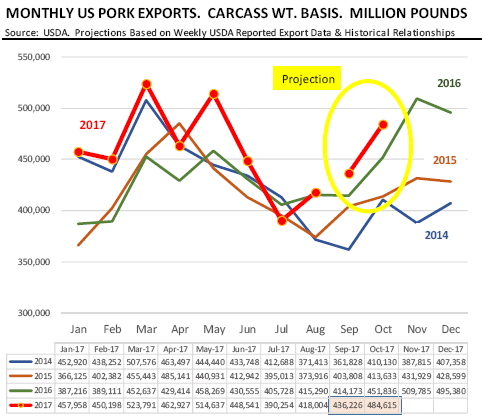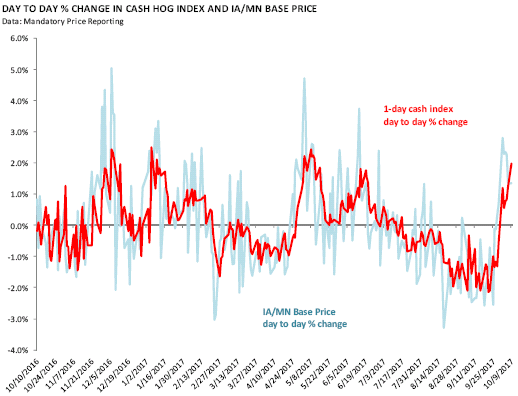



CME: November Projected to be Key for Pork Exports
US - Pork packers have been paying up for hogs in recent days and the turnaround in cash hog prices has bolstered both nearby and deferred futures contracts, reports Steiner Consulting Group, DLR Division, Inc.The race is now on to try and project out where the October contract will settle. USDA reports twice a day on the base price paid of hogs (report LM_HG201 for the IA/MN base and report 203 for the national base price.
But the cash index is calculated using net prices and that report has a one day lag to it. So using the base price to project out where the net price will be and eventually where the cash index will settle is not precise.
Market participants need to pay attention to the day/day change in base prices as well as the trend in premiums paid, which ultimately impact the net price. At the bottom of this page, we have included a chart that shows the day/day per cent change in the IA/MN base price vs. the day/day change in the 1-day cash index. On Tuesday, the cash index jumped 2 per cent from the day prior and likely fueled the 115 point jump in the October contract.
Why are packers paying up for hogs even as, by all reports, hog supplies are plentiful and are expected to be record large through the end of the year? In two words: better demand. Packer margins are in excellent shape and despite all time record pork supplies coming to market the pork cutout today is trading at the same level as it was a year ago.
Hog processors are in the business of processing hogs. As long as they can make money doing that, they will look to run at maximum capacity. From the hog trading perspective, producers have managed to become more current and the increase in slaughter capacity has helped alleviate the anxiety/panic/uncertainty that affected the market a year ago.
Hog carcass weights started rising sharply in early September as the seasonal increase in hog supplies ran smack against the reality of still very tight slaughter capacity. The two new pork processing plants started operations in early September but they cannot go from 0 to 100 in a day.

The incremental backlog of hogs created during this period put significant pressure on cash hog prices. This was further compounded by the seasonal drop in demand for some items, particularly pork bellies.
Bacon ads that fueled the rally in the belly market during the summer quickly came to an end and this caused the belly primal to go from over $200/cwt to around $90/cwt. The decline in the value of bellies alone removed almost $18/cwt from the value of the hog carcass.
But belly prices have stabilized and expectations/speculation is that current low prices will encourage more features in early 2018, similar to what happened last year. Pork exports were flat in August but weekly shipment data indicates that exports at this point are running above year ago levels.
Based on calculations from Steiner Consulting, pork exports in September are forecast at 436 million pounds (carcass weight basis), +5.3 per cent higher than a year ago. Exports for October are projected at 484 million pounds, 7.1 per cent higher than last year.

November will be key for US pork exports. Last year a surge in export orders helped absorb much of the increase in pork production. Futures are currently trading as if that will happen again. Watching weekly export numbers remains critical.









